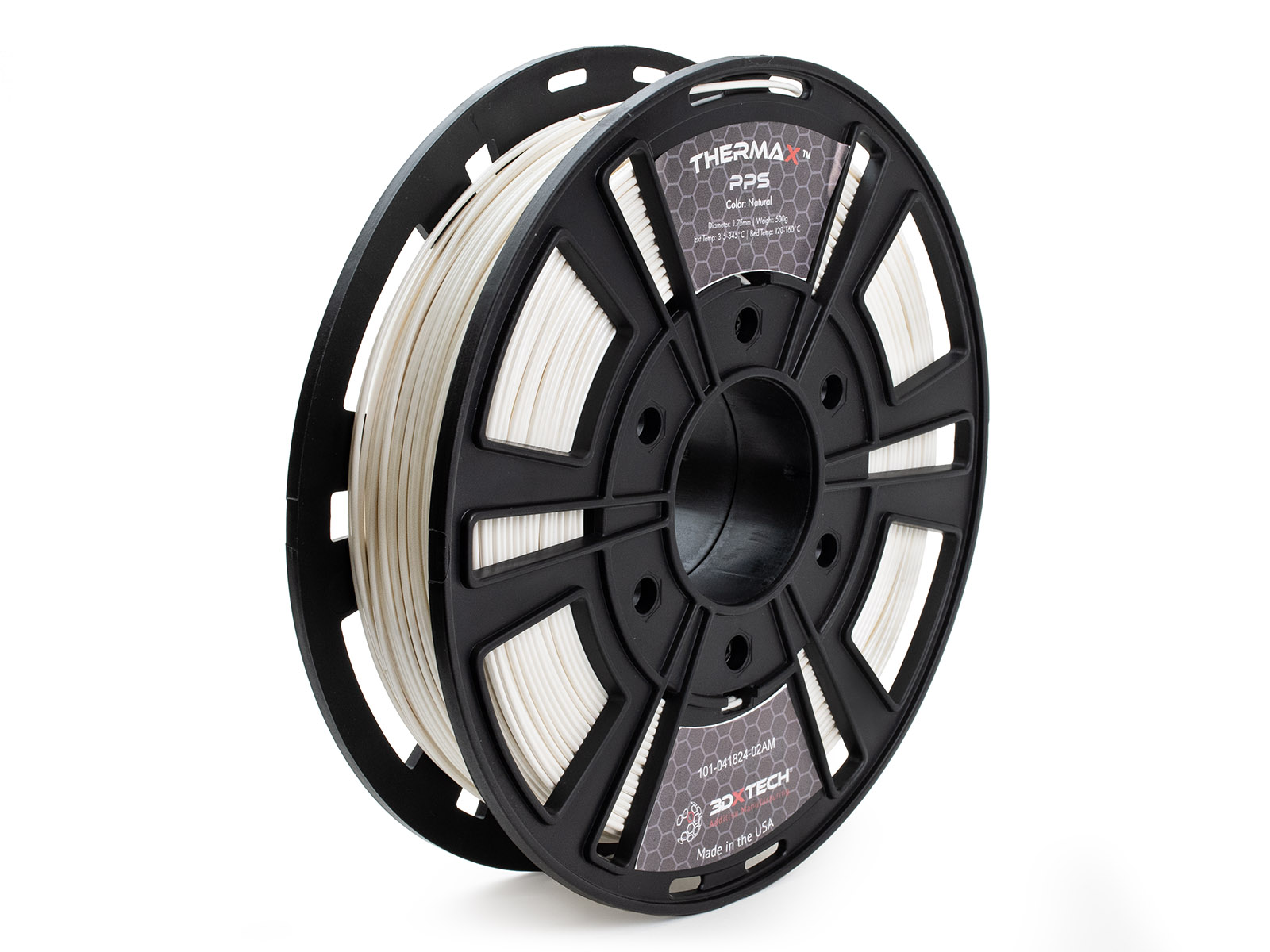- English
- Čeština
- Español
- Deutsch
- Polski
- Français
- Home
- Utilizzo della stampante
- Guida ai materiali
- PPS (Polifenilene solfuro)
PPS (Polifenilene solfuro)
- Modelli 3D
- Guida ai materiali
- ABS
- ASA
- Materiali compositi (riempiti con carbonio, kevlar o vetro)
- Materiali compositi (con particelle di metallo o legno)
- CPE
- Essiccare il filamento
- Materiali flessibili
- HIPS
- Come stampare con il PEI 1010
- Come utilizzare la ricarica Prusament refill
- Valori di trasparenza dei filamenti e codici esadecimali di HueForge
- LW PLA
- NGEN
- PEEK-CF (Polietere-etere-chetone)
- PEI (Ultem)
- PEKK-CF (Polietere-chetone-chetone)
- PETG
- PLA
- Poliammide (Nylon)
- Policarbonato (PC)
- Polipropilene (PP)
- PPS (Polifenilene solfuro)
- Suggerimenti per stampare correttamente
- Camera riscaldata
- Preparazione della superficie di stampa
- Campioni
- PPSU (Polifenilsulfone)
- Prusament Resin Model Color Kit
- PSU (Polisolfone)
- PVB
- L'ingiallimento della resina e come ridurlo
- Resine
- Resine testate
- Solubile in acqua (BVOH/PVA)
- Slicing
- Manutenzione della stampante
- Prusa Connect & PrusaLink
Il PPS o solfuro di polifenilene è un materiale termoplastico tecnico semicristallino adatto alla stampa 3D caratterizzato da un'elevata resistenza al calore e agli agenti chimici. La caratteristica principale di questo materiale è la resistenza chimica, in particolare agli acidi, agli alcali e ai solventi. È altamente resistente ai solventi organici e non si scioglie in nessun solvente conosciuto al di sotto dei 200°C.
Con una stabilità termica da -100°C a oltre 200°C, il PPS è la scelta ideale per le applicazioni che richiedono resistenza a temperature estreme. Questo materiale ha eccellenti proprietà meccaniche, tra cui elevata tenacità, forza e resistenza all'usura, ma può essere più fragile di materiali come PSU e PPSU. Le sue eccezionali caratteristiche elettriche, come l'elevata rigidità dielettrica e il basso fattore di dissipazione, ne aumentano ulteriormente l'attrattiva per le applicazioni in campo elettrico ed elettronico.
Temperatura consigliata dell'ugello: 330 - 370°C
Temperatura del piano consigliata: 120 - 150°C
|
Pro |
Contro |
|---|---|
|
✔ Resistenza alle alte temperature |
✖ Costo più elevato |
|
✔ Eccezionale resistenza chimica - |
✖ Incline alla deformazione |
|
✔ Resistente alle radiazioni |
✖ Richiede l'essiccazione |
|
✔ Adatto come materiale isolante |
✖ Richiede adesivi per aumentare l'adesione al piano di stampa |
| ✔ Materiale autoestinguente |
✖ La rimozione dei supporti può essere difficile |
| ✔ Stabilità dimensionale durante la stampa |
|
| ✔ Basso assorbimento di umidità |
|
Suggerimenti per stampare correttamente
È essenziale mantenere il filamento asciutto, altrimenti le sue proprietà meccaniche si deterioreranno in modo significativo. Nonostante il basso assorbimento di umidità, si consiglia di essiccare il filamento per almeno 4 ore a 110°C prima della stampa e di utilizzare un box asciutto. La stampa di questo materiale richiede una camera chiusa e riscaldata con una temperatura minima di 65°C.
Camera riscaldata
Per stampare questo materiale è necessaria una camera riscaldata attivamente con una temperatura di 65°C o superiore. Una camera riscaldata è essenziale per la stampa di materiali ad alta temperatura in FFF, per diversi motivi:
- Previene le deformazioni: Mantiene temperature stabili per ridurre le deformazioni e le fessurazioni.
- Migliora l'adesione degli strati: Favorisce connessioni più forti tra gli strati.
- Preserva le proprietà del materiale: Assicura la corretta cristallizzazione e la resistenza del materiale.
- Previene l'intasamento: Impedisce il raffreddamento prematuro delle fibre e previene i problemi di estrusione.
- Migliora la precisione: Riduce l'espansione termica e migliora la precisione dimensionale.
Preparazione della superficie di stampa
Per la stampa, è necessario applicare un adesivo speciale sul piano di stampa (ad esempio, MAGIGOO HT) per ottenere un primo layer perfetto. Si consiglia di utilizzare l'adesivo in più strati.
Campioni
 |  |
 |  |
Commenti
Hai ancora delle domande?
Se hai una domanda su qualcosa che non è trattato qui, dai un'occhiata alle nostre risorse aggiuntive.
E se questo non dovesse funzionare, è possibile inviare una richiesta a info@prusa3d.com o tramite il pulsante qui sotto.